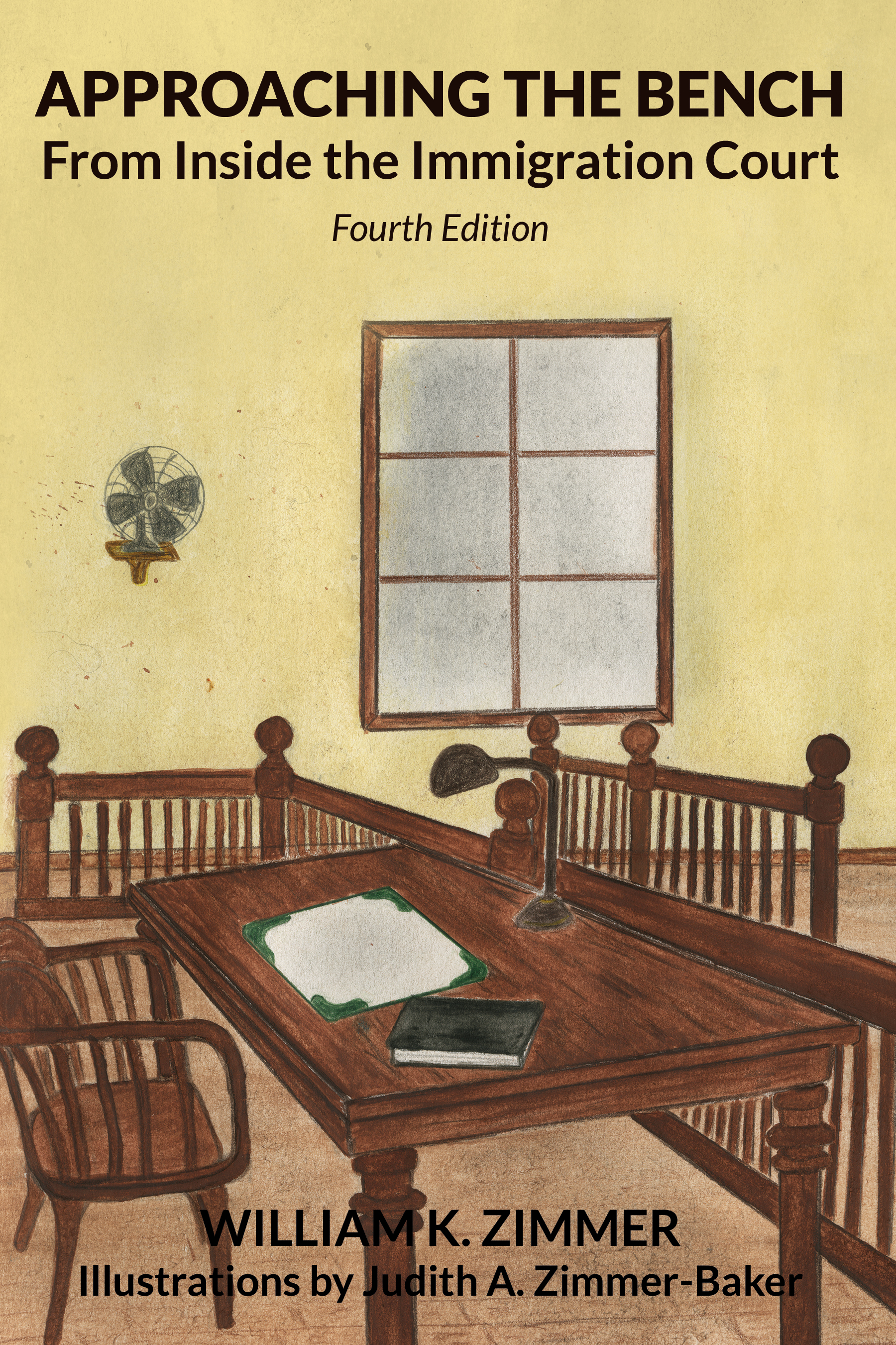Federal Immigration Jurisdiction and the Role of Immigration Judge
.jpg)
Congress created the position of “Superintendent of Immigration” in the Treasury Department in 1891 which appears to be the very beginning of the former Immigration and Naturalization Service. See section 7 of the Act of March 3, 1891.
Congress was very detailed about the duties and work conditions of the Superintendent of Immigration, providing for a specific salary, office space in Washington and three clerks. See section 7 of the Act of March 3, 1891.
The specific legislative provisions relating to working conditions and office personnel are noteworthy. Modern legislation, as opposed to the product of late 19th century Congressional “hands-on” approach law making, sometimes appears to be a mere delegation of authority to government agencies (in deference to agency “expertise”) to promulgate regulations that will hopefully achieve aspirational goals. In the 19th century and early 20th century, the United States government was leaner. Fatty layers of bureaucracy comprised of numerous federal agencies that exist today had not yet fully developed.
Present day federal agencies appear to bypass traditional checks and balances by writing regulations (a legislative function), enforcing its own regulations with fines and sometimes detention (an executive function) and adjudicating controversies arising from the enforcement of its own regulations (a judicial function). Federal courts defer to agency interpretations of law if the relevant statutory provision is ambiguous and the agency’s interpretation is reasonable. Chevron U.S.A., Inc. v. Natural Resources Defense Council, Inc., 468 U.S. 837 (1984).
Returning to federal immigration jurisdiction, the function of the “Superintendent of Immigration” was transferred from the Treasury Department to the Department of Commerce and Labor in 1903. See section 22 of the Act of March 3, 1903. However, by this time Congress had changed the title, “Superintendent of Immigration,” to “Commissioner-General of Immigration.” See the Act of March 2, 1895.
During former president Woodrow Wilson’s administration in 1913, Congress designated the immigration function and the naturalization function as separate bureaus in the newly created Department of Labor. See section 551 of the Act of March 4, 1913.
In 1933, former president Franklin D. Roosevelt, with Congressional approval, directed the consolidation of the immigration and naturalization bureaus into the Immigration and Naturalization Service of the Department of Labor. See Executive Order No. 6166 of June 10, 1933.
It was not until 1940 that the Immigration and Naturalization Service was transferred to the Department of Justice in accordance with the “Hoover Plan.” See the Reorganization Act of 1939.
The Executive Office For Immigration Review (“EOIR”), home to the immigration court and the Board of Immigration Appeals (“BIA”), evolved within the former Immigration and Naturalization Service (“INS”) after 1940 until the EOIR emerged as an independent agency subdivision in 1983.
Finally, in 2002 Congress abolished the former INS and transferred its operating units to the newly formed Department of Homeland Security (“DHS”) as Immigration and Customs Enforcement (“ICE”) and Citizenship and Immigration Services (“CIS”). See the Homeland Security Act, Pub. L. 107-296, 116 Stat. 2135 (2002).
Congress, however, preserved the EOIR in the Department of Justice. Thus, the immigration court survived the 2002 transfer of the former INS functions to the DHS and currently remains in the Department of Justice.
Now, the primary agencies charged with the enforcement and administration of immigration law are the DHS, including ICE and CIS subdivisions, and the EOIR. Generally speaking, the DHS performs an enforcement function through ICE, the CIS component oversees the dispensation of benefits under the immigration law and the EOIR houses the immigration courts and the BIA which perform adjudication functions.
Law enforcement is not a one way process characterized solely by penalties and denials. Immigration law also provides benefits to those who qualify for them. Therefore, even handed law enforcement requires the grant of statutory benefits to qualified applicants. As law enforcers, DHS attorneys and other DHS officers have the responsibility to ensure that qualified aliens seeking benefits under the immigration law receive them.
As previously noted, the immigration courts and the BIA are primarily charged with adjudication of controversies between individuals and the DHS. This adjudication function, however, can become blurred with prosecution, especially for Immigration Judges.
The blurring of prosecution and adjudication functions of the Immigration Judge exists because the role of Immigration Judge evolved from the immigration inspection process after Congress transferred jurisdiction over the inspection of “alien immigrants” from State entities to “inspection officers of the United States.” See section 8 of the Act of March 3, 1891.
Previously, in section 2 of the Act of August 3, 1882, Congress had empowered the Secretary of the Treasury to enter into contracts with state commissions, boards, or officers designated by the state governors “to take charge of the local affairs of immigration in the ports within said State . . ..”
After passage of the Act of March 3, 1891, the inspection process was no longer carried out by officers appointed by state entities, but by inspection officers of the United States which directly led to the opening of Ellis Island in New York on January 1, 1892.
Congress provided for Special Inquiry Boards in section 24 of the Act of March 3, 1903. These Special Inquiry Boards were made up of three immigration inspectors who were charged with investigating the admissibility of an alien who had not been found “to be clearly and beyond a doubt entitled to land” by a primary immigration inspector.
Not only could a favorable decision to admit an alien be challenged at a port of entry by any other immigration officer, but a favorable decision by a Special Inquiry Board could be appealed by one dissenting board member. See section 25 of the Act of March 3, 1903.
Referring to the performance of Special Inquiry Boards, a congressional commission observed in the Brief Statement of the Investigations of the Immigration Commission, with Conclusions and Recommendations and Views of the Minority, Reports of the U.S. Immigration Commission (1911) that:
The character of their decisions is indicated somewhat by the fact that nearly 50 per cent of the cases appealed are reversed by the Secretary of Commerce and Labor, whose decision, under the law, must be based solely upon the evidence adduced before the board. This record of reversals on appeal suggests that their decisions which are not reviewed may be equally wrong.
Nevertheless, Special Inquiry Boards continued to function after Congress transferred immigration and naturalization services to the Department of Justice in 1940. See the Reorganization Act of 1939; section 1 of the Reorganization Plan No. V (effective June 4, 1940).
It was not until Congress passed the Immigration and Nationality Act of June 27, 1952 (“the 1952 Act”) that the Special Inquiry Board was replaced by a solitary Special Inquiry Officer. See section 101(a)(4) of the 1952 Act.
The authority and duties of a Special Inquiry Officer are described in section 242(b) of the 1952 Act as follows:
A special inquiry officer shall conduct proceedings under this section to determine the deportability of any alien, and shall administer oaths, present and receive evidence, interrogate, examine, and cross-examine the alien or witnesses, and, as authorized by the Attorney General, shall make determinations, including orders of deportation . . . an additional immigration officer shall be assigned to present the evidence on behalf of the United States and in such case such additional immigration officer shall have authority to present evidence, and to interrogate, examine, and cross-examine the alien or other witnesses in the proceedings . . ..
After almost 50 years of experience with Special Inquiry Boards, Congress substituted a single Special Inquiry Officer for the 3-person Special Inquiry Board. The notion, however, that the Special Inquiry Officer is an investigative immigration officer, sometimes working in concert with another immigration officer, to present evidence, examine, and cross-examine witnesses, etc. is retained. The current description of the duties of an Immigration Judge in section 240(b)(1) of the Immigration and Nationality Act, as amended (“the Act”) is essentially the same as the description of the duties of Special Inquiry Officers in section 242(b) of the 1952 Act.
Every Immigration Judge must integrate dual functions imposed by statute. Specific choices along the tension line between prosecutor and judge must be made in conducting removal hearings and issuing decisions. However, a subtle trend for the immigration court seems to be moving toward emphasis of the judicial role of the Immigration Judge as opposed to the prosecutorial and investigative role. The 1996 title change from “Special Inquiry Officer” to “Immigration Judge” is a reflection of this trend. See 1996 - Pub. L. 104–208, §371(b)(9).
Due to a statutory trend toward a judicial role and practical impediments, such as lack of investigatory resources to conduct investigations and lack of authority to order DHS investigations or intervene with DHS prosecutorial discretion, it appears that the best choice for an Immigration Judge is to emphasize the judicial role and fundamental fairness, leaving the investigative and prosecutorial duties in the hands of the DHS.
All things considered, it seems fair to say that the immigration court is more valuable in terms of fundamental fairness and creation of public confidence in the integrity of its performance, as well as more efficient, when it is conducted by an “Immigration Judge” rather than a “Special Inquiry Officer.”
Perhaps, the time has come for Congress to consider conversion of the immigration court from an administrative court to a legislative court under Article I of the United States Constitution, as it did for the IRS tax court in the Tax Reform Act of 1969.

